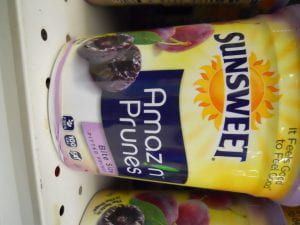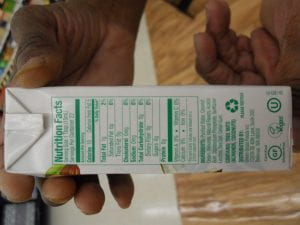On October 21, 2019 Mr. Dan SEVERSON spoke to the class on Delaware’s Livestock Industry. He covers the large-scope of the industry and the varied number of animals that are cultivated in agriculture.
Less than 2% of the U.S. population is involved in agriculture- a farm is any family that makes $1, 000 a year from agriculture. 98% of farms are family-owned and account for 87% of all agricultural value generated. In Delaware, more than half of the farms are less than 50acres. More than half of farms have sales that generate less than $50, 000 in profit. $3.5 million is generated in direct-to-consumers in products and Delaware is the #1 state in the U.S. for value of products per acre. Delaware is also the #1 producer of lima beans in the U.S.
In the U.S., the livestock industry occupies .5mil acres land, with 500, 000acres in farms accounting for 40% of the gross domestic product. With an average of 200 acres per farm, the industry generates about $8 billion in profit for agriculture.
Before going into the specifics of the Delaware livestock industry, Mr. SEVERSON gave the class a quick history overview. In 1914 WW1 takes shape & so begins the birth of agricultural extensions. In the 1930s Depression & Dust Bowl hit. And in 1939 WW2 starts, encouraging farm hands go to war. When the farmers return, they bring training & technology. No young man is willing to work for $0.50/week when they might earn $7/day at a factory. In1950, Ammonium Nitrate fertilizer increases crop yields, aiding in a 265% increase in production and decreasing inputs by 2%
As a result of the wars ‘advancements’ the average annual per capita consumption of meat has changed over the years- beef, pork, and lamb have decreased while poultry has increased. 29% of Delaware’s land area is planted in corn & soybeans, and most of that produce goes towards the poultry industry as chicken feed. Goat & veal consumption has not been tracked ‘til recently. In the U.S. family food costs on average represent just 9.7% of a households income, that food typically consisting of what is most affordable, safe, & abundant. Compare that percentage to Russia’s average family spending 14-15% of their income, or the average Ethiopia n family spending 45%. Much of that reduction in cost is due to the way that the meat is produced.
In Delaware there are 235 beef farms with 14, 000 cows/calves between them. Many of the cows are fed a Total Mix Ration (TMR) for more efficient and tailored nutrition. An example of a Delaware cattle farm would be Power’s Farm in Townsend, Delaware. Cattle are often the topic of Animal Welfare discussions.
Pork is soon to be vertically integrated. Swine production, Mr. SEVERSON notes, is a subject taught by UD’s Dr. Lesa GRIFFITH. Hogs may be raised farrow to finish, farrow to feeders, or feeders to finish. When keeping pigs, it is important to note white pigs are prone to sunburn, making the black breed Berkshire better for bacon. Part of the processing of hogs involves a scalding trough to skin the pigs, which Mr. SEVERSON notes is very hard to do. A popular value-added product made from pork is, ‘Artisan Scrapple.’ Mr. SEVERSON interjects the lecture to pose a question to the class on why pork shoulders are referred to as, ‘Boston Butt’. When no one is able to provide an answer, he moves on. Conducting a quick search after the fact define the pork shoulder is the ‘skinless, boneless upper part of a pigs front shoulder’. A common cut, a quick Google search notes the name came from barrels the pork was shipped in and the region that made the cut popular.
Sheep are typically raised for wool. He notes that ‘Hair sheep’ are a type of sheep with wool that falls out. The upcoming Delaware Agricultural Week in January 2020, a Maryland farmer with a sheep milking operation is slated to come.
Goats are raised for three things- Angora, milk, and meat. There is no certified meat & milk facility in Delaware. In New Holland PA, the 2nd largest goat auction in country is held- Texas hosts the biggest auction. The U.S. cannot support it’s ethnic population’s demand for goat meat, namely Islamic, Jamaican, & Jewish where goats are used for celebration. Mr. SVERSON says that goats are browsers like deer which eat above their heads. The reason for it’s lack of broad popularity might be because goat meat doesn’t marble. Mr. SEVERSON proudly mentions that he received $280 for small (60-80lbs) goat in New Holland, where the price is based on the amount of meat. While attending the National Goat Conference in Montgomery, AL, where ice cream and cheesecake are popular forms of value-added goat products for a niche market. Lotions & soaps are easier in Delaware without a certified dairy.
Dairy is dying in the U.S. In Delaware there were once 80 dairies, which decreased to 50, and now just 21 dairy farms operate today with 4 creameries- Woodside, UDairy, Hopkins, & Vanderwende Creamery. Natural by Nature & Hy-Point are the remaining processors. Farm fresh, homemade ice-cream is a popular commodity. Mr. SEVERSON notes Amish youth prefer construction to milking with it’s regular hours and consistent work. Whole milk contains 3.25% milk fat, while skim milk contains just 1%, but there is no raw milk available in Delaware. To generate a profit, dairy cow numbers are increasing- it takes 1000 cows minimum to make profit. For farms that are struggling, the cows are either moved to farms or shipped to different states & countries.
Other livestock farmers may keep for commercial production include bees, bison, alpaca, llamas, rabbits, water buffalo, deer, chickens, turkey, & emu. Mr. SEVERSON informed that class that he was unwilling to raise alpaca or llamas because they look ‘strange’ to him…
Lastly, Mr. SEVERSON discussed growing agricultural trends in the livestock industry. The number of farms is increasing while overall farm size has been cut in half- total production covers 8, 000 acres in Newark. The industry is also seeing a growing number of young farmers. Farms and CSA’s are becoming increasingly diversified and catering to niche markets. Many of these smaller farms are selling value-added products to direct markets. 10 current GMO crops include, corn, soy beans, cotton, papaya, squash, tomatoes, potatoes, canola, alfalfa, & sugar beets
The future of the livestock industry depends on new technology like GMO’s and robotics for labor, and investment in the next generation to cater to the environment, government regulations and animal welfare. Mr. SEVERSON states he has seen an increase in young females without and agricultural background pursuing knowledge to enter the industry. It takers 3-4years to establish a farm working with grants for funding. Mr. SEVERSON often conducts experiments on his own farm first. With that, he informs us of the skills and traits needed to work for the Extension agency. The following soft skills are preferable- listening, compassion, working with others and reading them. Other skills include agricultural skills, professional skills, & education.






